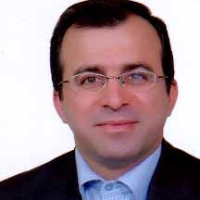Gender Stereotypes in Iran based on the Socio-Demographic Approach
The population of women and gender equity play a crucial role in the society’s growth and development process. This is a long-standing fact throughout human history that has been experienced in many societies across the world. It is also vitally important to mention that while gender bias and gender stereotypes exist more or less in all societies throughout the world, the existence and the extent of gender unfairness and stereotypes are still critical benchmarks for socio-economic development across the world: on the one hand, the existence and dominance of gender unfairness and stereotypes are overwhelmingly more visible in the developing countries so that women’s lives are substantially affected by gender unfairness and stereotypes; on the other hand, the opposite applies to the developed countries where gender fairness and a significantly lower level of gender stereotypes are the predominant patterns of gender dynamics of the societies in the developed world.
Methodologically, the context of this analysis is Iran which has witnessed one of the most spectacular demographic swings throughout the world in human history (McDonald, 2005) and has experienced fundamental socio-cultural changes and challenges which are also significantly associated with gender dynamics and women’s status in Iran. More specifically, the empirical research findings of this analysis are based on a recently-conducted and nationally-representative survey to explain the dimensions and differentials of gender stereotypes in Iran. The survey includes a sample of 3667 males and females aged 15 years old and over. It covers both urban and rural areas in varying parts of the country including Ahvaz, Babolsar, Bojnord, Esfarayen, Gonbade-kavos, Hamadan, Khoram-abad, and Mahmoud-abad. The present analysis employs the combined model developed by Macionis (2001) and Taylor (2003) in order to measure gender stereotypes. Using these methodological bases, the present study examines the major patterns and determinants associated with attitudes towards gender stereotypes in Iran from a socio-demographic perspective.
Generally speaking, the results of this analysis show that about one-third of the respondents have positive attitudes towards gender stereotypes. However, this general pattern is substantially affected by three major groups of determinants: demographic variables, religiosity, and gender attitudes. This suggests that gender stereotypes tend to be significantly more visible and dominant amongst the older people than the younger individuals, males than females, married people than unmarried individuals, rural residents than urban residents, illiterates and low-educated people than individuals with higher tertiary education.Additionally, the results of this analysis have revealed that people’s attitude towards gender stereotypes is significantly associated with their religiosity. This means that the higher the level of religiosity is, the stronger the attitude towards gender stereotypes will be. However, when the level of religiosity decreases, the attitude towards gender stereotypes also witnesses a decreasing trend. For instance, half of those with the highest level of religiosity hold a positive attitude towards gender stereotypes, whereas this proportion falls substantially down to one-third amongst those with the lowest level of religiosity. Another example relates to the fact that positive attitudes towards gender stereotypes are significantly stronger among the believers of full hijab, as compared with those who believe in modest types of dress codes for women.Furthermore, the results of this study indicate the key fact that attitudes towards gender roles have substantially key effects on gender stereotypes: the more conservative the former, the stronger the latter. For example, according to the research findings of this analysis, the stronger attitudes towards gender stereotypes exist overwhelmingly amongst those who believe in the male-breadwinner traditional model and disagree with women’s employment outside the home. In sum, the main patterns observed in this analysis and discussed in this paper can be explained by theories of modernization and changing values, suggesting that modern and liberal approaches tend to play a fundamental role in individuals’ attitudes towards gender stereotypes in Iran.
- حق عضویت دریافتی صرف حمایت از نشریات عضو و نگهداری، تکمیل و توسعه مگیران میشود.
- پرداخت حق اشتراک و دانلود مقالات اجازه بازنشر آن در سایر رسانههای چاپی و دیجیتال را به کاربر نمیدهد.


